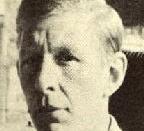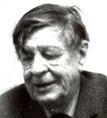Look, stranger, at this island now by W.H. Auden
This poem us a "musical" exercise in which the poet reveals his technical skill by using sound techniques and figurative language to reinforce his description of a scene. It is one of Auden's few poems of natural description, perhaps of the coast in the West Country of England.
The first stanza requires the stranger - someone unfamiliar with the island of kingdom of Britain but perhaps acquainted with the stereotype of it as a dull and gloomy place - to look at, and re-examine his prejudice about, Britain, as it is revealed ("discovered") for his enjoyment by the sunlight dancing and flickering on the waves of the sea. The alliteration and consonance of -l- sounds (leaping, light, delight) and of the dental -t- and -d- sounds (light, delight, discovers) in the second line, and the variation of long vowel sounds in "leaping" and "light", together with the repetition of "light", creates a quick dancing effect which mimics the reflection of sunlight off waves.
In two more commands the narrator requires the stranger to stand and remain quiet so that he can hear the sound of the sea, varying in volume, perhaps according to the fixity required, while the pattern of stresses on "wander" and "river", in the penultimate line, and on "swaying sound of the sea", in the last line, combined with the sibilance, conveys an idea of the changing volume of sound coming from the sea, and the continued whispering sound that it makes.
The second stanza invites the stranger to wait at the point where a small field ends in a chalk cliff, which drops to a shingle beach below. The waves surge up the beach until they are halted by the cliff. The assonance of the long -au-...


